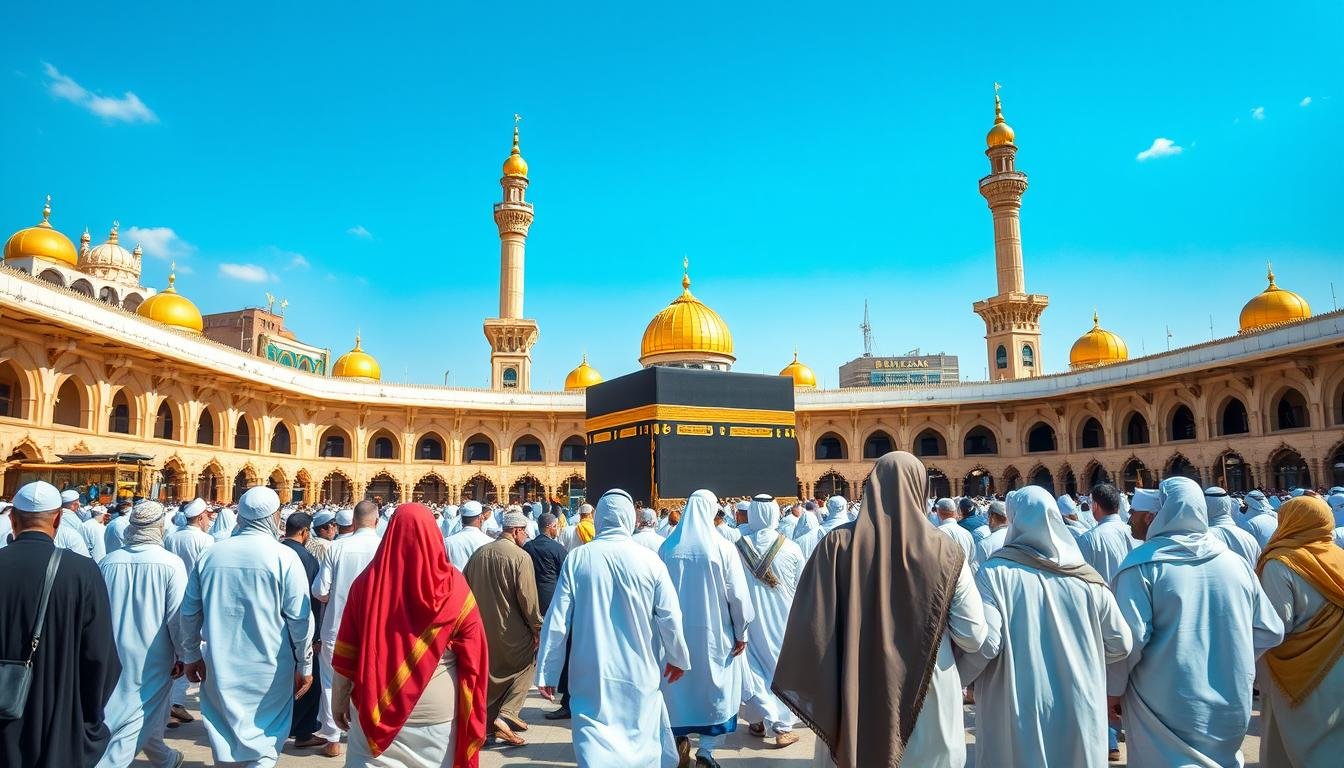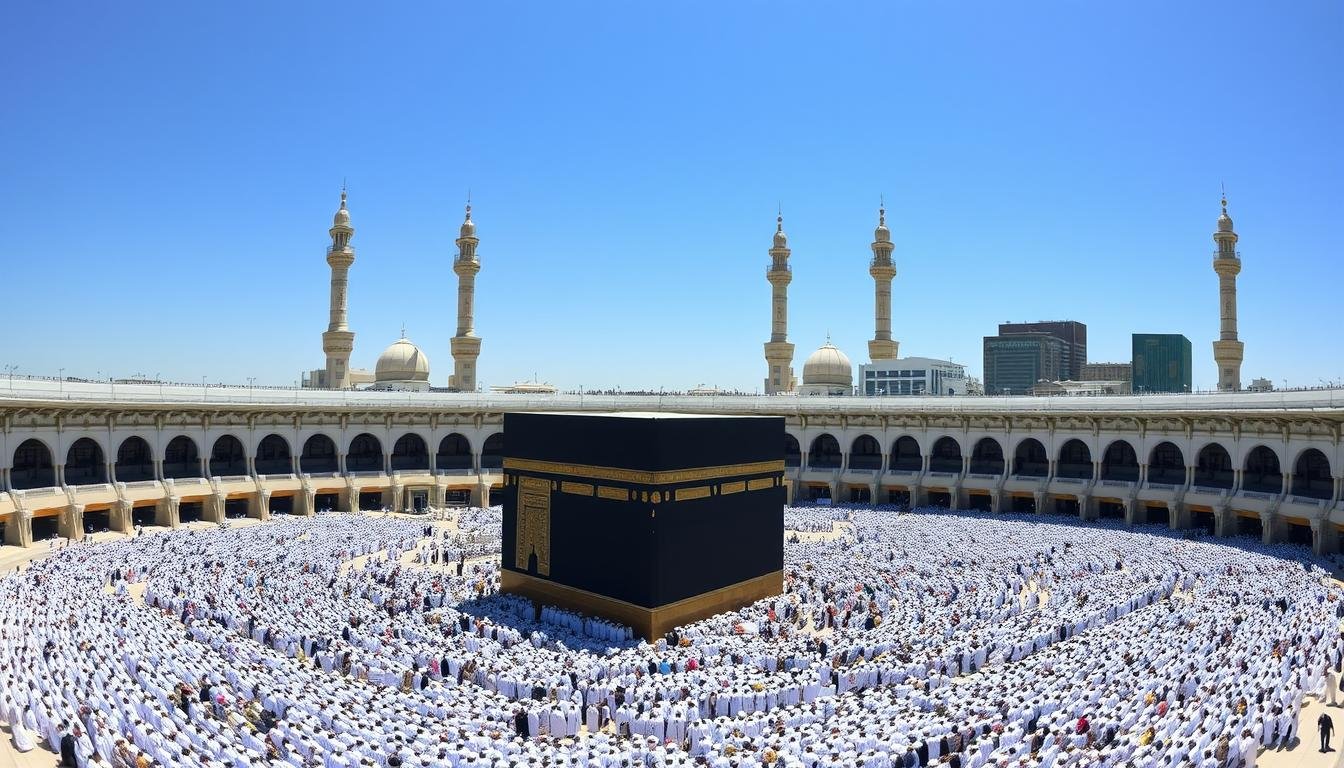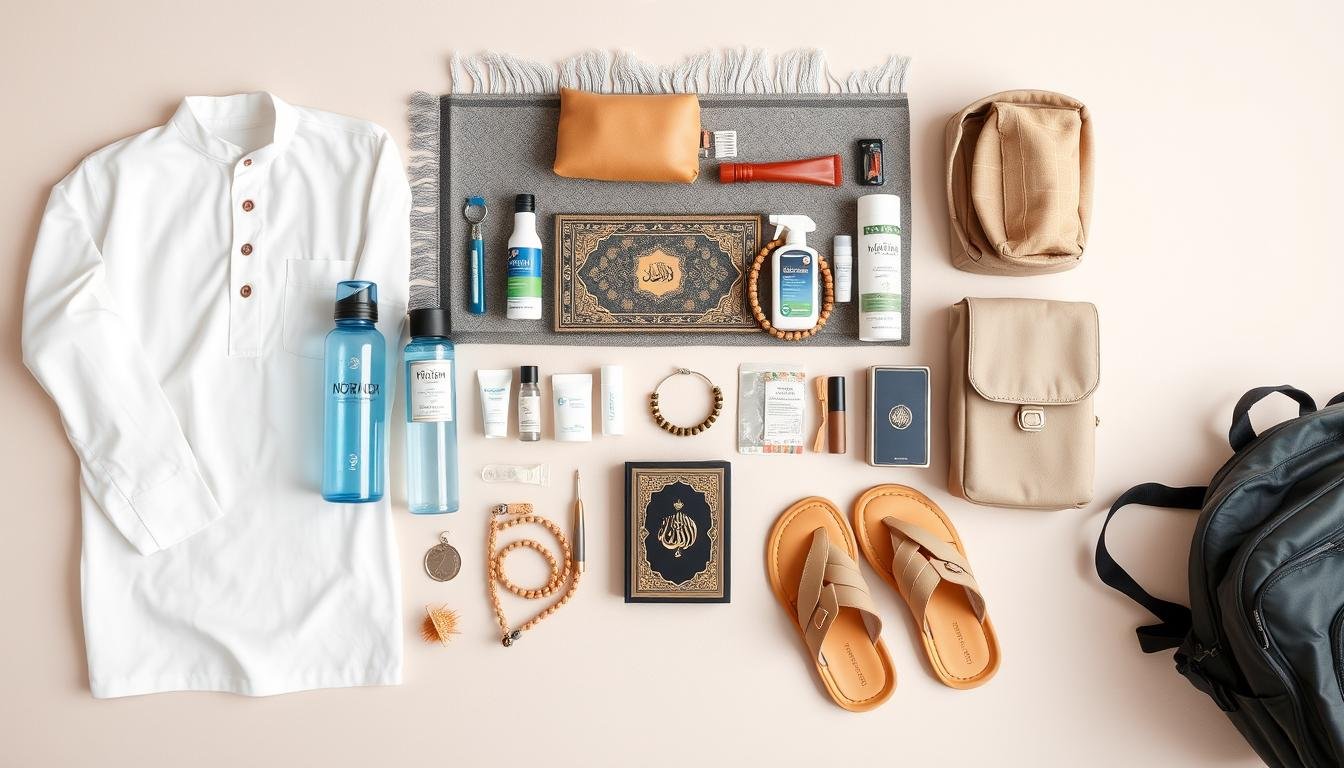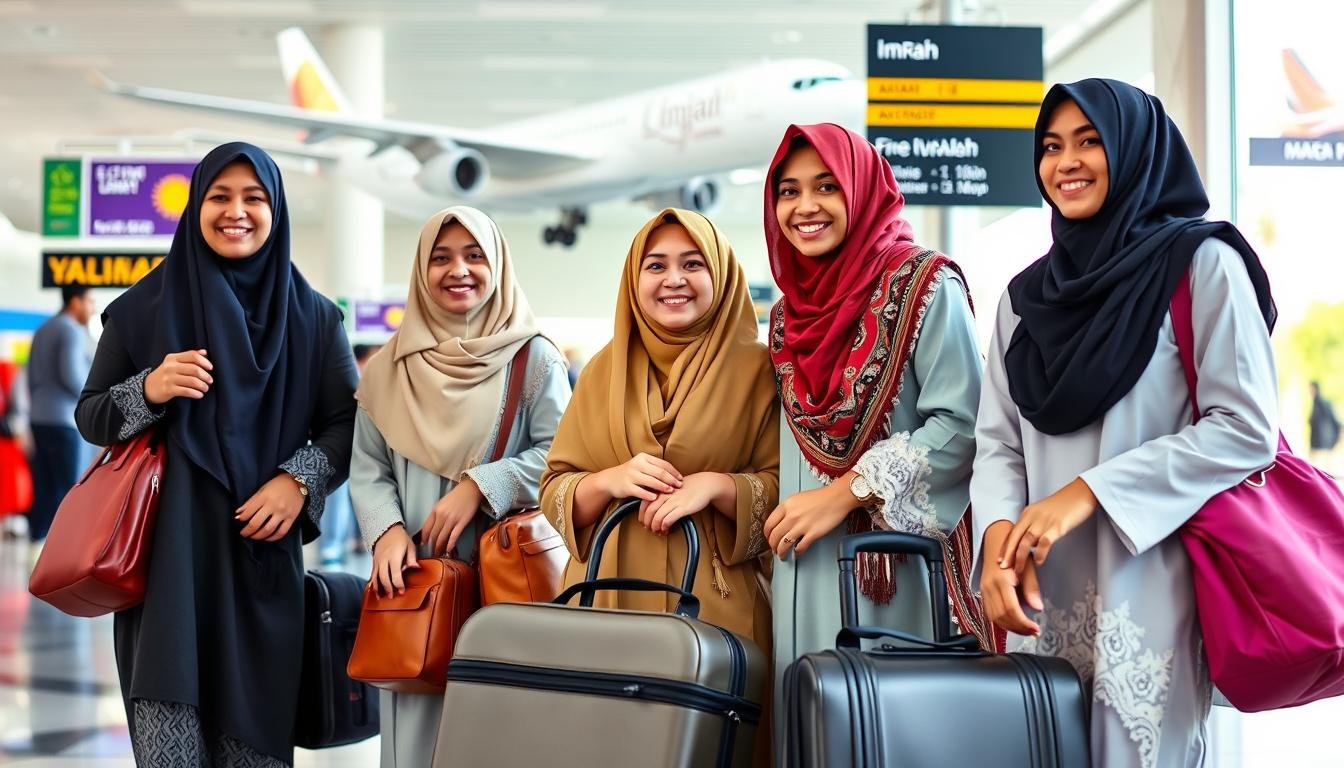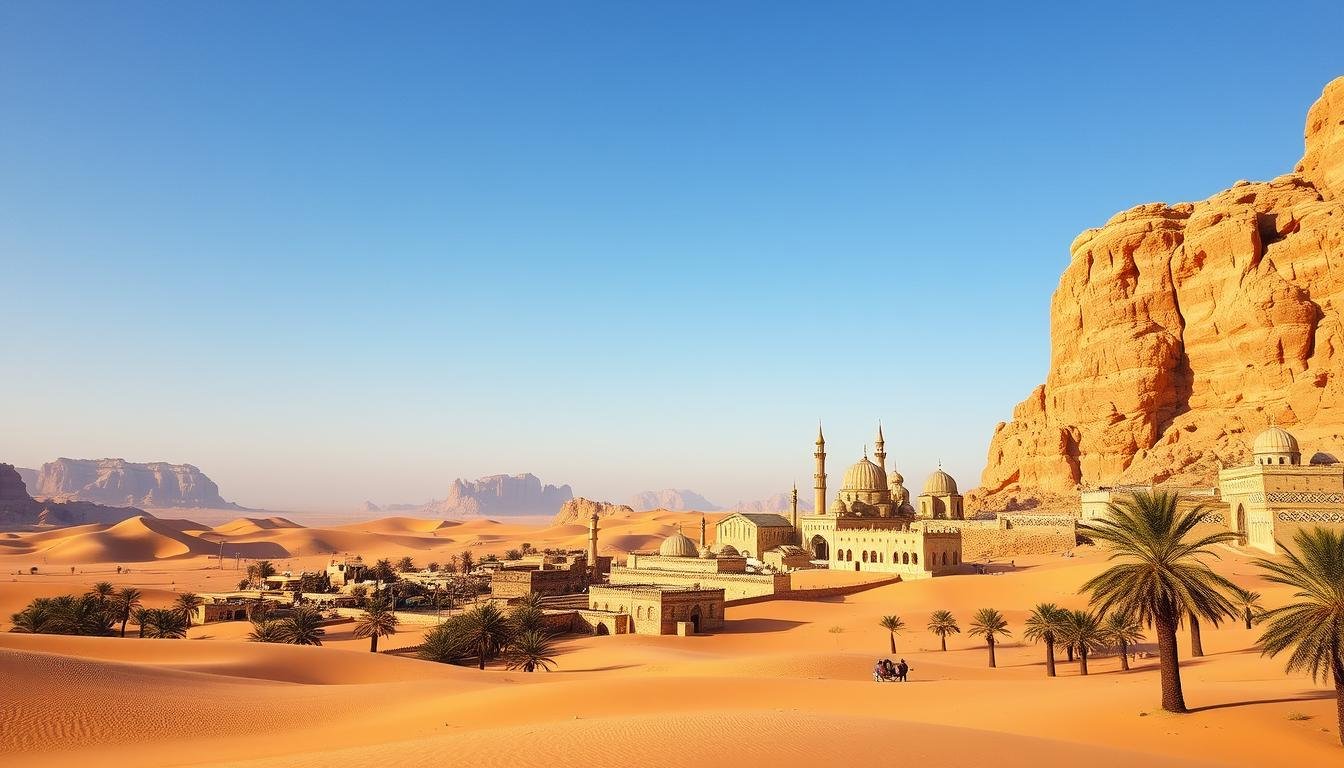Are you planning a pilgrimage to Saudi Arabia? This spiritual journey to Islam’s holiest sites can change your life. But, it’s key to know the cultural and religious rules to follow. Wondering what are the most critical etiquette rules to follow during your pilgrimage to Saudi Arabia?
This guide will help you plan your pilgrimage to Saudi Arabia. We’ll cover cultural insights, navigating sacred sites, and dress code guidelines. Our goal is to make your journey spiritually rewarding and culturally fitting.
Understanding Saudi Arabia’s Cultural Landscape
Traveling to Saudi Arabia as a pilgrim means you must value its rich culture. The country’s traditions and social norms have shaped it for centuries. It’s key to behave respectfully and grasp the subtleties of Saudi society for a fulfilling journey.
Traditional Values and Social Norms
Saudi Arabia is a conservative and religious place. Islamic values and customs are deeply rooted here. Modesty, hospitality, and respect for elders are key principles.
Pilgrims should dress modestly and be mindful of their behavior. This helps avoid offending locals or disrespecting customs.
Modern Saudi Society
Yet, Saudi Arabia is changing, with a more modern society emerging. Visitors will see both old and new. Being open and adaptable helps understand this cultural mix.
Religious Significance
Islam is at the heart of Saudi Arabia. It’s where the Prophet Muhammad was born and the holy sites of Mecca and Medina are. Pilgrims must show great respect and follow strict rules at these places.
| Traditional Values | Modern Trends |
|---|---|
| Modesty | Gradual social reforms |
| Hospitality | Increased female empowerment |
| Respect for elders | Embrace of technology |
Essential Do’s and Don’ts for Pilgrims Visiting Saudi Arabia
When you travel to Saudi Arabia as a pilgrim, it’s important to know the local customs and rules. Here are some key things to remember during your trip:
Do’s:
- Dress modestly and conservatively, covering your arms, legs, and hair (for women).
- Respect the call to prayer by avoiding public activity and noise during these times.
- Familiarize yourself with the proper etiquette when visiting holy sites, such as the Grand Mosque in Mecca.
- Be courteous and respectful when interacting with local residents, especially in public spaces.
- Follow the guidance of your tour guide or religious leader for a smooth and meaningful pilgrimage experience.
Don’ts:
- Do not bring in any prohibited items, such as alcohol, pork products, or non-Islamic religious materials.
- Avoid public displays of affection or intimate behavior, as this is considered inappropriate in Saudi culture.
- Refrain from taking photographs or videos inside holy sites without permission, as this may be seen as disrespectful.
- Do not criticize or make negative comments about the Saudi government, religion, or cultural practices, as this could be considered offensive.
- Steer clear of engaging in any illegal activities, such as drug use or gambling, as the penalties can be severe.
By following these essential do’s and don’ts, you can ensure a meaningful and respectful pilgrimage experience in Saudi Arabia. This way, you honor the country’s rich cultural and religious heritage.
Preparing Your Documentation and Permits
Going to Saudi Arabia for the pilgrimage needs careful planning. You must have all the right documents and permits. This guide will help you with visas, permissions, health certificates, and travel insurance.
Required Visas and Permissions
Getting the right visa is key for pilgrims visiting Saudi Arabia. The Hajj visa lets you visit holy sites and join rituals. Some may also need a special permit for Mecca and Medina. Always check the latest visa rules and apply early to avoid problems.
Health Certificates and Vaccinations
Your health is very important for the hajj. You’ll need to show proof of certain vaccinations, like for meningitis and polio. You might also need a health certificate from a doctor.
Travel Insurance Requirements
Travel insurance is a smart choice for pilgrims in Saudi Arabia. It covers medical emergencies, trip cancellations, and other surprises. Look for insurance that fits the needs of visiting holy sites.
| Required Documentation | Details |
|---|---|
| Hajj Visa | Mandatory for all pilgrims, grants access to holy sites and participation in rituals |
| Mecca/Medina Permit | Additional permit required for some pilgrims to visit the holy cities |
| Health Certificates | Proof of specific vaccinations, such as meningococcal meningitis and polio |
| Travel Insurance | Comprehensive coverage for medical emergencies, trip cancellations, and other unforeseen events |
Dress Code Guidelines for Male and Female Pilgrims
When you go on a pilgrimage to Saudi Arabia, it’s important to follow the dress code. This shows respect for local customs and traditions. It also makes your journey smoother and more meaningful.
Male Pilgrims’ Attire
Male pilgrims need to wear traditional Ihram clothing. This includes two white, seamless garments. One wraps around the waist, and the other covers the upper body. It shows purity, humility, and equality before God.
Male pilgrims should not wear certain items. These include stitched or decorated clothes, leather shoes or socks, headcovers (except for sun protection), and perfumes or cologne.
Female Pilgrims’ Attire
Female pilgrims need to dress modestly and cover their bodies. They should wear loose, flowing clothes that cover everything, including their head and hair. The Abaya, a long, black cloak, and a Hijab are common choices.
Female pilgrims should avoid certain items. These include tight, form-fitting clothes, revealing necklines or short skirts, bright or bold colors, and jewelry or accessories that draw attention.
By following these guidelines, both male and female pilgrims show respect for the holy sites. They also blend in with the local culture during their pilgrimage to Saudi Arabia.
Navigating Sacred Sites: Mecca and Medina Protocol
Going on a pilgrimage to Saudi Arabia means knowing the rules for Mecca and Medina. These places are very important for many people. It’s key to follow the guidelines to have a respectful and meaningful visit.
Etiquette at the Holy Mosques
When you enter mosques like Masjid al-Haram in Mecca and Masjid an-Nabawi in Medina, there are certain rules. You must wear modest clothes, covering your head and body. Also, don’t wear perfume or make loud noises. It’s important to keep the atmosphere calm and respectful.
Photography and Social Media Rules
There are strict rules about taking pictures and using social media in these places. It’s usually not allowed to take photos. If you can, do it with great care and respect. Always ask before taking someone’s picture.
Time Management During Rituals
- Plan your schedule well to join in all the rituals and prayers.
- Listen to the prayer calls and adjust your plans to not interrupt the worship.
- Make sure you have enough time for each ritual. This way, you can fully enjoy the spiritual experience.
Knowing the mecca and medina guidelines helps you visit these sacred places with respect. This way, your pilgrimage will be truly meaningful and enriching.
Prohibited Items and Substances
Going on a pilgrimage to Saudi Arabia means knowing what’s not allowed. This is especially true for Mecca and Medina. Knowing what’s banned can prevent legal trouble or awkward moments on your journey.
Alcohol and pork are big no-nos in Saudi Arabia. Bringing them in or drinking them can lead to big fines or jail time. Also, having or using illegal drugs is a serious offense with harsh penalties.
- Alcohol and pork products
- Illegal drugs
- Weapons and ammunition
- Gambling and gambling-related items
- Pornographic materials
- Tobacco and vaping products (in certain areas)
Some items, like weapons or certain medicines, might need special permits. It’s key to check the customs rules before you pack.
| Prohibited Item | Reason for Prohibition | Potential Consequences |
|---|---|---|
| Alcohol and pork products | Considered haram (forbidden) in Islam | Fines, imprisonment, and possible deportation |
| Illegal drugs | Strict anti-drug laws in Saudi Arabia | Severe penalties, including lengthy prison sentences and corporal punishment |
| Weapons and ammunition | Strict regulations on the possession and use of firearms | Confiscation, fines, and possible imprisonment |
By knowing and following the rules on banned items in Saudi Arabia, pilgrims can have a better trip. It’s important to respect the local culture and religion for a meaningful pilgrimage.

Transportation and Accommodation Essentials
Traveling in Saudi Arabia as a pilgrim needs careful planning. The country offers many ways to get around safely. From Mecca’s busy streets to Medina’s historic sites, knowing the local transport is crucial for a smooth trip.
Getting Around Safely
Saudi Arabia has a good public transport system with buses and trains. It’s easy and cheap to see the country. Taxis are also common, but always choose licensed and metered ones for safety.
If you want freedom, renting a car is a good choice. But, make sure you know the local driving rules.
Choosing Appropriate Lodging
Pilgrims have many places to stay, like hotels, guesthouses, and homestays. It’s important to pick a place that fits your needs and respects local culture and religion. Look for places with halal amenities and follow the dress code and gender rules.
Emergency Contact Information
It’s vital to have emergency numbers ready during your trip. Learn the local emergency numbers, like police and medical services. Also, register with your embassy or consulate in Saudi Arabia for support if needed.
Knowing how to get around, choosing the right place to stay, and having emergency numbers ready will help you travel confidently in Saudi Arabia. Being prepared is key for a successful and memorable saudi arabia travel tips journey.
Health and Safety Measures During Pilgrimage
Going on the hajj pilgrimage to Saudi Arabia is a spiritual and life-changing journey. But, it’s important to focus on health and safety. Keeping yourself well is key to enjoying the pilgrimage fully. Let’s look at the important steps to take for a safe and meaningful hajj.
Drinking plenty of water is crucial in Saudi Arabia’s hot and dry climate. Carry a refillable water bottle and drink often. Wear light, long clothes and a big hat to protect from the sun.
Dealing with big crowds can be tough, but knowing safety rules helps. Listen to local guides and stay alert to avoid accidents. Know the emergency numbers and plans from your tour or the Saudi government.
Having good medical care is vital during the hajj. Find good hospitals near your stay and keep your insurance handy. Talk to your doctor about shots and meds before you go.
By focusing on health and safety, you can dive into the hajj’s spiritual and cultural depths. Stay alert, follow local advice, and ask for help when needed. This way, you’ll get the most out of this unforgettable journey.
Communication and Technology Guidelines
Visiting Saudi Arabia as a pilgrim means knowing the rules for communication and technology. This ensures a smooth and enjoyable trip. You’ll find it easy to navigate the digital world with the right tips.
Mobile Apps for Pilgrims
Staying connected is key during your pilgrimage. There are many mobile apps that can help. The official Hajj and Umrah app is a must-have. It offers vital info, schedules, and guidance.
Apps like Manasikana and Shukran are also great. They help manage your trip, find prayer spots, and make payments online.
Internet Access and Restrictions
Getting online is easy, with many places offering free Wi-Fi. But, some websites and content are blocked in Saudi Arabia. This includes social media and content not fitting Islamic values.
It’s wise to be careful and respect local customs online.
Emergency Communication Plans
Having a solid emergency plan is crucial. Make sure you have a contact back home and your travel agency’s info. Also, know the emergency numbers in Saudi Arabia.
Knowing these guidelines helps you stay connected and safe. They’re set to protect all visitors to the Kingdom.
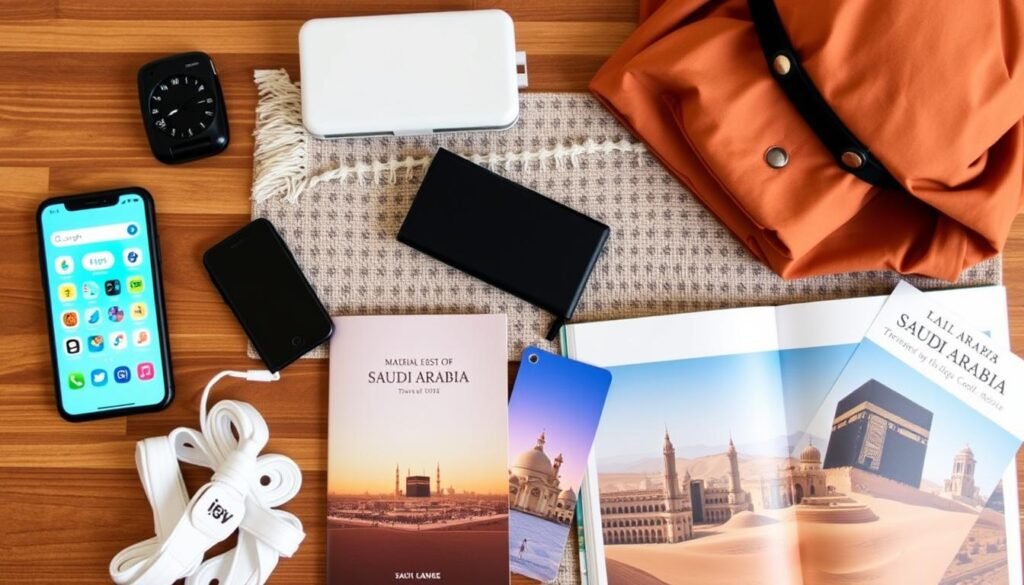
Conclusion
My pilgrimage to Saudi Arabia has ended, but the lessons and experiences stay with me. I learned the do’s and don’ts for visiting the Kingdom. These helped me respect and enjoy my journey.
Understanding the culture and following local customs was key. It let me dive deep into the spiritual heart of the country. I felt a true connection to the Islamic faith.
Preparing for the pilgrimage was a big part of the journey. I got the right documents and stayed safe. I saw how well Saudi Arabia organizes for millions of pilgrims each year.
Now, I feel more humble and connected to my faith. I’m thankful for the advice I got along the way. It helped me focus on the spiritual side of the pilgrimage.
I’m ready to share my experiences with others. I want to help future pilgrims prepare for their own journeys. This way, they can have a transformative experience like mine.
FAQ
What are the essential do’s and don’ts for pilgrims visiting Saudi Arabia?
Visiting Saudi Arabia as a pilgrim means respecting the culture and traditions. Dress modestly and be polite to locals. Don’t bring alcohol, pork, or anything that might offend.
Make sure you have the right visas, health certificates, and permits before you go.
How can I prepare for the cultural and religious aspects of my pilgrimage to Saudi Arabia?
Learn about Saudi Arabia’s culture and the importance of places like Mecca and Medina. This knowledge will help you respect the pilgrimage more deeply.
What is the dress code for pilgrims visiting Saudi Arabia?
The dress code is strict. Men must wear the Ihram, a simple white garment. Women should wear modest, loose clothes that cover their bodies.
Avoid anything too flashy or revealing. It’s seen as disrespectful.
What are the prohibited items and substances in Saudi Arabia?
Don’t bring alcohol, pork, drugs, or anything considered offensive. Know the customs rules to avoid trouble at the border. Some religious items might be restricted, so check ahead of time.
How can I ensure I respect the religious and cultural customs at the holy sites of Mecca and Medina?
At Mecca and Medina’s mosques, follow the rules. Wear the right clothes, remove your shoes, and don’t take pictures. Be respectful and follow local guides to avoid offending the sites.
What kind of documentation and permits do I need for my pilgrimage to Saudi Arabia?
You’ll need a passport, a pilgrimage visa, and health certificates. Get all your documents ready well before you leave. The application process can take time.
How can I stay safe and healthy during my pilgrimage in Saudi Arabia?
Keep yourself healthy and safe. Drink water, avoid the heat, and know emergency services. Follow crowd rules and stay alert.
What are the best ways to communicate and stay connected during my pilgrimage in Saudi Arabia?
Use mobile apps, the internet, and emergency plans to stay in touch. Be aware of any communication restrictions. Plan how to stay connected when needed.
Don’t forget to share your experience in the comments and follow us on social media at the bottom of the site.
